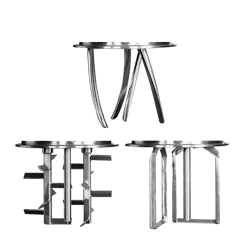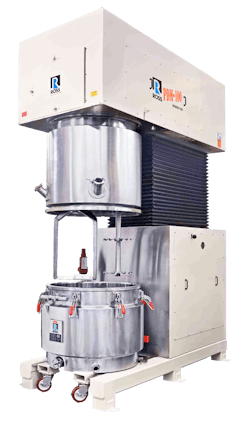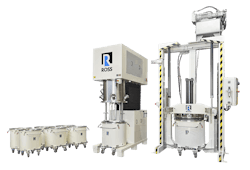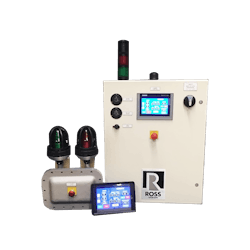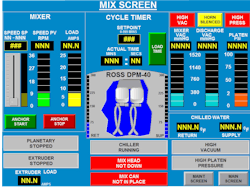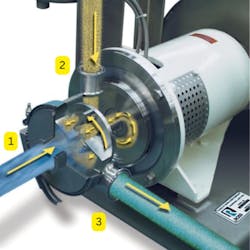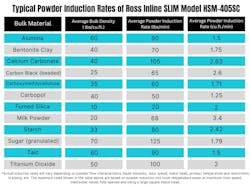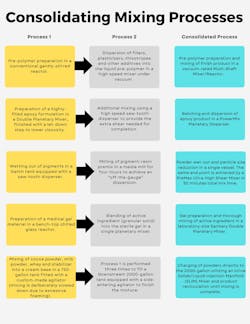Optimizing mixing efficiency: 5 strategies for industrial manufacturers
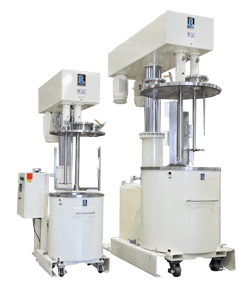
The manufacturing landscape is evolving rapidly, marked by ever-increasing competition and consumer demands, unpredictable supply chain disruptions, and the persistent challenge of employee turnover. In this dynamic environment, optimizing processes and tightening production efficiency has become a top priority for manufacturers across the process industries. Among these processes, mixing stands out as a cornerstone of production, affecting energy consumption, product quality, and operational costs. Despite mixing’s pivotal role, the benefits of efficient mixing are often underestimated. This article presents five possible strategies that manufacturers can begin to adopt.
1. Choose the best mixer for your processing needs
In recent years, the process of selecting the right mixer has grown in complexity due to the advancement of mixing technologies, leading to functionalities and applications that often overlap. A wide variety of applications can be effectively processed using multiple types of mixers, but choosing the correct mixer can produce a better final product while saving time and money. For example, consider the intricate challenge posed by barely flowable compounds such as hot-melt adhesives, thermal compounds, reinforced plastics, industrial sealants, and other viscous compounds. These materials are typically processed in multi-shaft mixers or double planetary mixers. Each of these machines boasts a distinctive set of advantages and disadvantages while sharing overlapping capabilities.
Multi-shaft mixers employ two or more independently driven agitators that work together seamlessly. These heavy-duty mixers can accommodate viscous products and may be configured with up to two high-speed agitators and a low-speed anchor agitator. Notably versatile, multi-agitator systems can effectively manage a wide viscosity spectrum, reaching up to several hundred thousand cP. Their operational flexibility primarily arises from their independently controlled drives, allowing agitators to engage in various combinations and speeds throughout the mixing cycle.
However, challenges emerge when products exceed the recommended viscosity range of the design. This may lead to potential motor overloads. To address this concern, certain manufacturers resort to overpowering the drives, employing higher horsepower motors that inadvertently compromise energy efficiency. As batch materials become progressively stickier or stiffer, agitation near the axis of rotation diminishes, especially at the batch periphery. In some cases, the anchor agitator might simply cut through highly viscous material rather than properly mixing it.
Operators frequently halt agitator operation during the batch cycle to manually shift stagnant materials within the vessel, indicative of the difficulties posed by such viscosity extremes. Another approach involves gradually adding material, particularly solid ingredients, in smaller increments to enable the mixer to "catch up." Clearly, this strategy exacerbates prolonged mixing times.
For the production of barely flowable compounds, a superior alternative is to use a mixing system with agitators that traverse all points within the batch, as opposed to rotating around a fixed axis or waiting for new material to circulate slowly. A planetary mixer is comprised of two agitator blades that individually rotate on their own axes while orbiting around a shared axis. The agitators continuously advance — whether the batch is fluid or stagnant — ensuring constant contact with fresh material. This design is extremely robust and thoroughly blends or kneads raw materials together, regardless of substantial differences in density or viscosity.
Applications that start out very fluid and thicken up throughout the course of the mixing cycle benefit from the combination of high- and low-speed agitation, like that of the Ross patented PowerMix, a hybrid planetary disperser that consists of a planetary stirrer and a high-speed disperser blade. Both agitators revolve around a central axis while also rotating on their own axes. The planetary stirrer sweeps material away from the vessel sidewalls and bottom, carrying it to the saw-tooth blade. This accelerates solids wet-out and dispersion while promoting both material and temperature uniformity throughout the batch at all times. From water-like viscosity to around 2 million cP, the mixer can impart high shear at any stage, including when the batch is still too low in viscosity to benefit from a double planetary mixer’s kneading action.
Similar to the PowerMix, the Ross double planetary mixer and planetary dual disperser are suitable for formulations that change dramatically from low to very high viscosity throughout the mixing cycle. The mixer features two planetary stirrers and two dispersers that rotate on their own axes while revolving around a central axis. The planetary stirrers continuously sweep material near the vessel walls and bottom, carrying them toward the saw-tooth blades. Solid additions can be made in larger quantities and shorter intervals. Agglomerates are disintegrated faster, and turnover is extremely efficient even if the material is particularly dense or sticky.
2. Adjust batch size strategically
As production scales up, batch size adjustments are inevitable. Merely adding more mixers of the same size might overlook economies of scale. Having many small mixers takes up crucial space and increases labor needs and maintenance costs. A larger mixer could be a more practical choice. Striking this balance is paramount, as excessively large batch sizes can be as detrimental as employing numerous undersized mixers. The optimal configuration requires meticulous evaluation of batch volume, number of batches per shift or day, mixer count, setup and changeover costs, and other variables.
Mixing tip
As mixer size increases, power per unit volume usually decreases. When scaling up from a laboratory or pilot process to a larger mixer, make allowances for a longer mixing time to compensate for the lower energy density. A good starting point is to take a ratio of the power per unit volume of the two mixers and use that to estimate a new mixing time. Establishing an optimal cycle time for a scaled-up process can normally be fine-tuned through trial-and-error testing.
Additionally, the adoption of semi-continuous mixing presents an innovative approach. By utilizing “change can” design process equipment — a single mixer with multiple interchangeable vessels — each stage of the mixing process can be efficiently orchestrated, from loading to mixing, discharge, and cleanup. This arrangement optimizes both machine and labor utilization, enhancing efficiency.
3. Master mixer controls
The mixer's control system plays a fundamental role in optimizing energy usage. Beyond serving as a bridge between operator and machine, a well-designed control system contributes to consistent product quality, reduced changeover durations, and minimized scope for operator errors.
The choice between simple or sophisticated process controls varies based on the unique demands of each process. At a minimum, integrating a variable frequency drive (VFD) offers advantages. A VFD facilitates soft start, curbing electrical demand by enabling the motor to gradually accelerate, thereby lessening current surges during startup. When applications require variable mixer speeds for optimizing flow patterns, shear level, or throughput, a straightforward VFD-controlled electronic speed system proves economical.
For more intricate operations, programmable logic controller (PLC) control alternatives are a strategic choice. These advanced systems seamlessly combine data such as agitator speeds, mixing duration, temperature, batch weight, vacuum/pressure levels, and other variables into recipes, as well as keep automatic records for each run. Whenever possible, obtain control solutions from the mixing equipment provider to ensure seamless project execution from design through production, installation, and commencement. Opting for controls integration alongside mixer procurement guarantees equipment readiness upon setup, expediting production efficiency.
4. Streamline raw material additions
Batch mixing time is a complex interplay of factors often including ease of dispersion, particle size reduction, emulsification, heating/cooling rates, solubility, and more. In large-scale operations, the method of raw material addition becomes one of the more crucial variables. Consider a scenario where a significant portion of the formulation is a powdered solid that requires dispersion or dissolution into a liquid medium. Adding the powder conventionally, through a charge port at the top of the mixer, in large volumes, can pose challenges, especially if the powder tends to dust or stay afloat on the liquid surface. Certain materials, such as gums and thickeners, form stubborn agglomerates when introduced too rapidly, even amidst vigorous agitation.
For sizeable batch mixing operations involving the dispersion or dissolution of solids into a flowable liquid, an inline powder injection system proves advantageous. Innovative technologies such as the Ross Solids/Liquid Injection Manifold (SLIM) emulate an external mixer linked to a tank, akin to a pump within a recirculation loop. Solids are injected directly into the recirculating liquid stream within the high-shear zone of the rotor/stator mix chamber.
Central to the SLIM process is a unique rotor/stator configuration engineered to create a potent vacuum, drawing powders into the mix chamber and simultaneously dispersing them into the liquid medium. The resultant mixture exits through the stator's slots at high velocity. When coupled to a large tank or reactor agitated by a slow-speed agitator, the inline SLIM delivers adequate shear for particle size reduction and, in the case of gums and thickeners, curbs the formation of lumps or "fish eyes." The swift product turnover via recirculation through the high-speed rotor/stator mixer maintains solids suspension in the batch, ensuring accelerated dissolution or uniform dispersion.
Utilizing a system such as the Ross SLIM for lightweight powders often eliminates dust-generating transfer steps. A hose and wand attachment can be affixed to the SLIM's powder inlet, enabling operators to draw powders directly from their original containers. For more manageable powders, a hopper facilitates manual or automatic feeding. After mixing, the inline SLIM may be used as a pump to transport the final mixture downstream to nearby equipment or storage vessels.
Application snapshot
A cosmetic manufacturer was looking to optimize cycle time in their two 500-gallon and two 1,000-gallon vessels, each equipped with turbine impellers for turning over a low-viscosity slurry. The source of the bottleneck was a side mixing step carried out in individual 55-gallon drums to disperse calcium stearate powders into glycerin using a sawtooth disperser. Operators had to lift the drums to the top of a mezzanine and manually charge the calcium stearate dispersion into the agitated batch.
Testing done on a 25-HP Ross inline SLIM confirmed that this technology can rapidly disperse the powders directly into the main tanks and also improve operator safety. A portable SLIM unit was then installed to serve all four tanks. Calcium stearate powders are now pre-weighed and loaded into the SLIM’s feed hopper at floor level, the mixer started to recirculate the process liquid, and the operator simply opens the hopper valve to begin injecting powders directly into the liquid stream. After a few turnovers, all the solids are completely dispersed. The SLIM mixer is easily disconnected from the recirculation piping and wheeled to another tank to perform the same service.
By eliminating the drum mixing step, the company was able to drastically reduce total mixing and cleaning time from hours to minutes.
5. Integrate mixing processes
Consolidating mixing processes within a single piece of equipment streamlines operations. One-pot processing brings myriad benefits — lower energy consumption, quicker throughput, simplified cleanup, reduced transfer steps, and lower operational costs.
Final thoughts
Consider new technologies and solutions with the guidance of a well-experienced equipment supplier with testing resources. This is essential because, for most specialty mixing processes, it is not desirable (or even possible) to predict mix quality, cycle time, or scale-up criteria without an empirical basis. There is no substitute for actual testing. Arrange a trial run at the manufacturer’s facility or, better yet, rent a mixer and perform comprehensive iterative testing.
Erin Dillon is media and marketing coordinator at Charles Ross & Son Company.
Ross Mixers
About the Author

Erin Dillon
Media & Marketing Coordinator
Erin Dillon is media and marketing coordinator at Ross Mixers.

